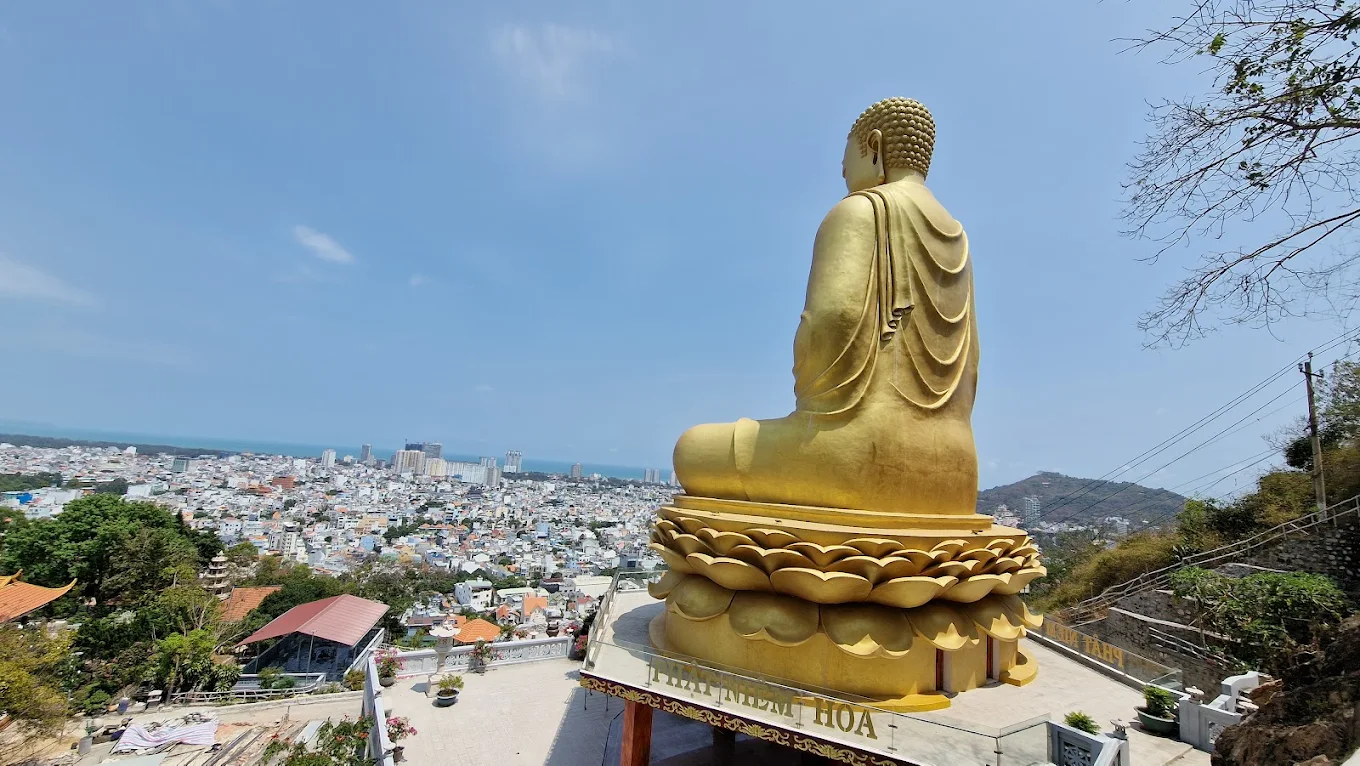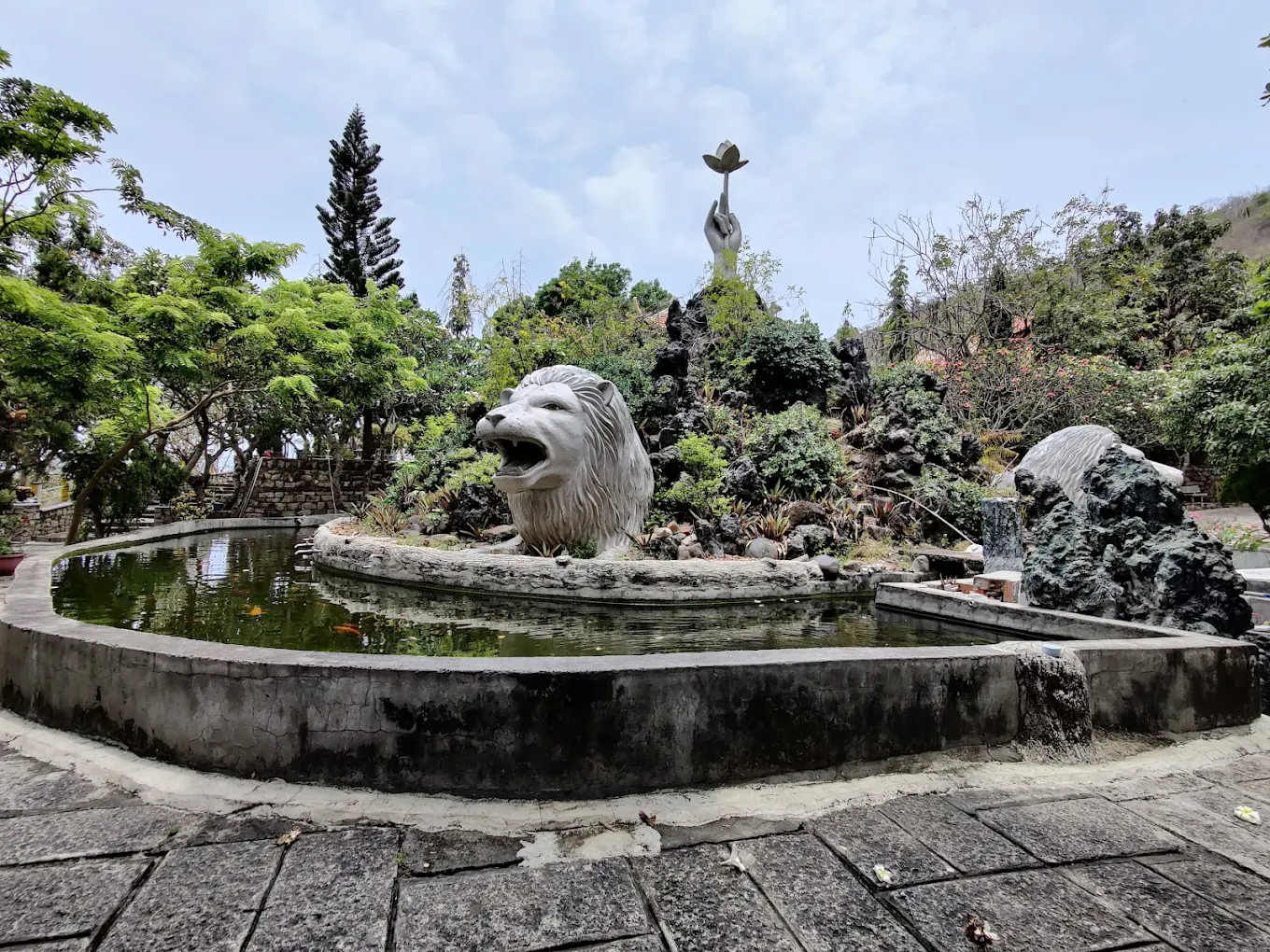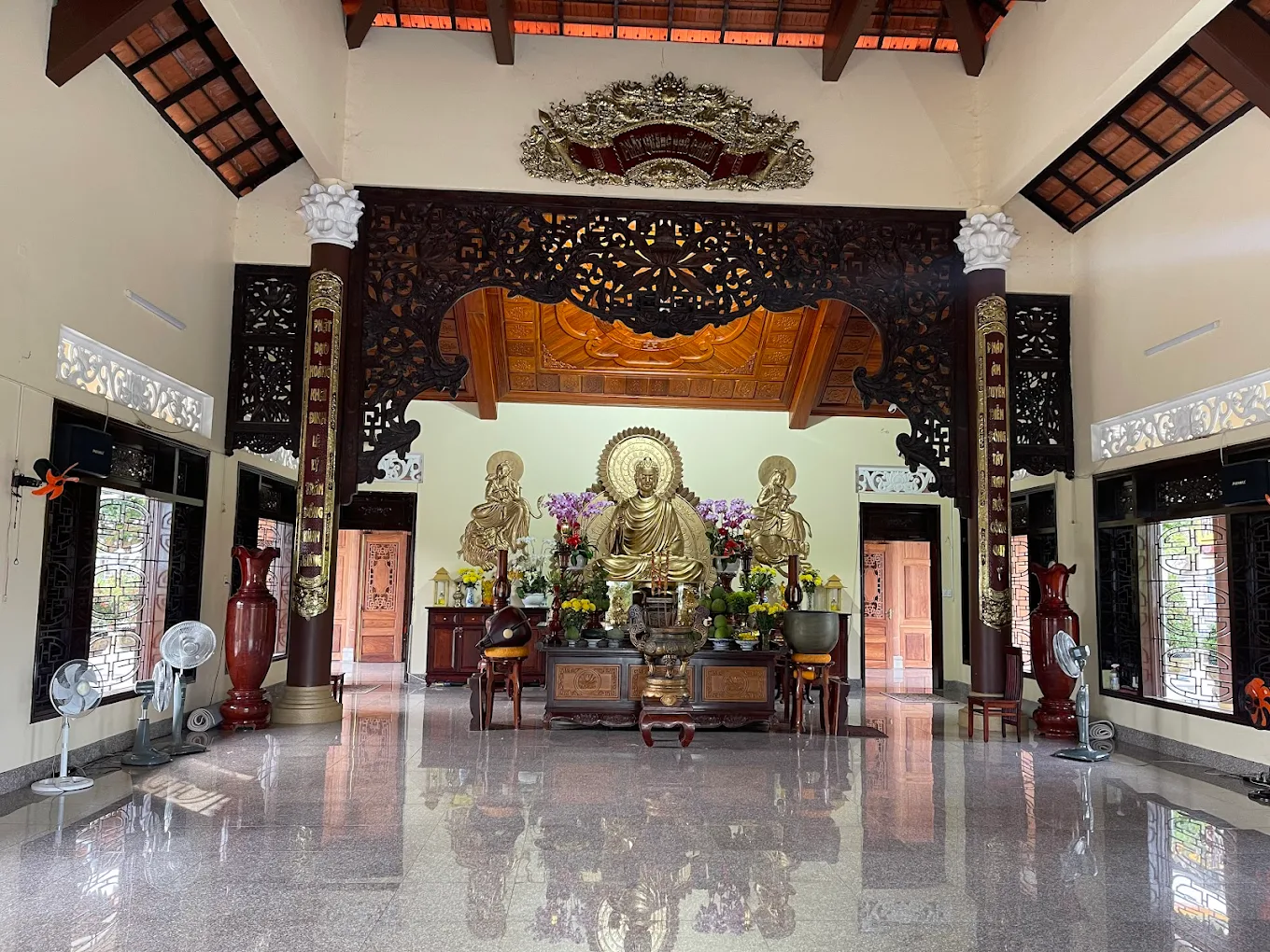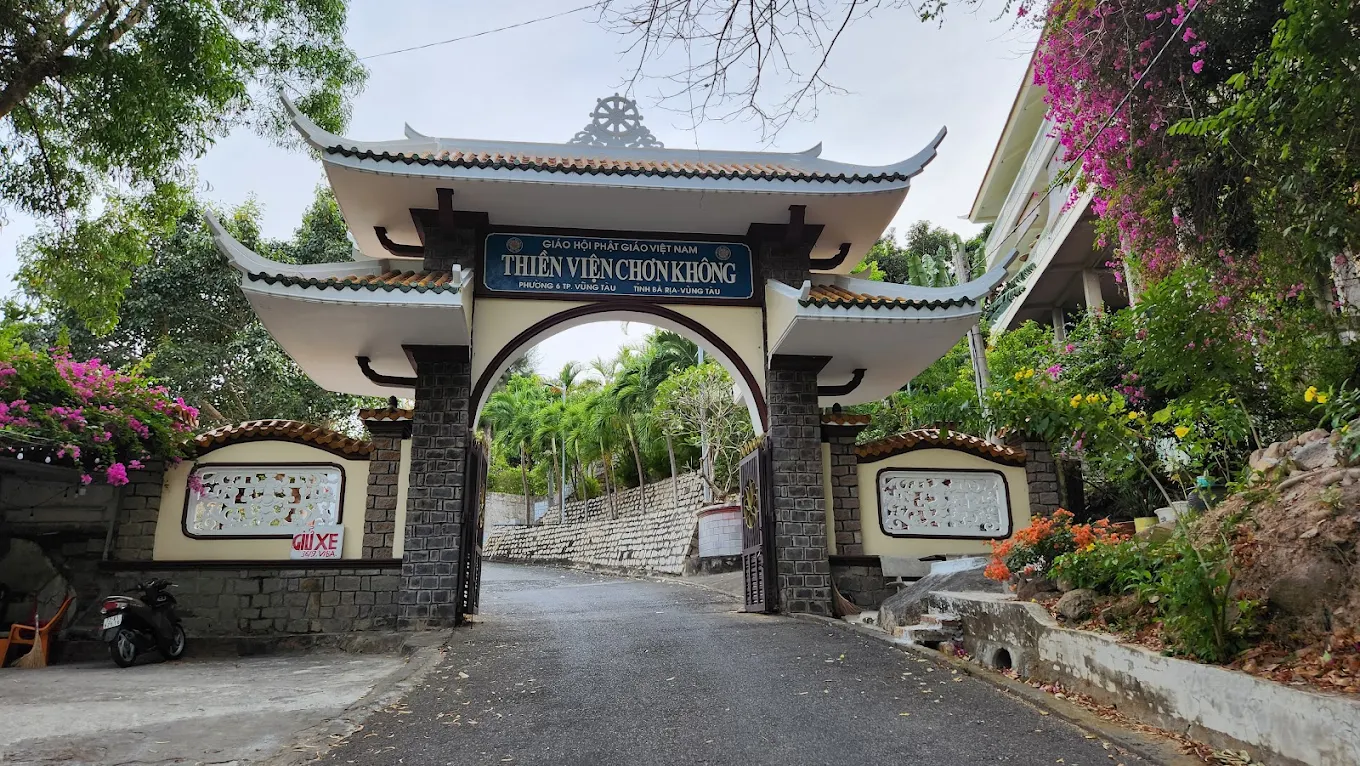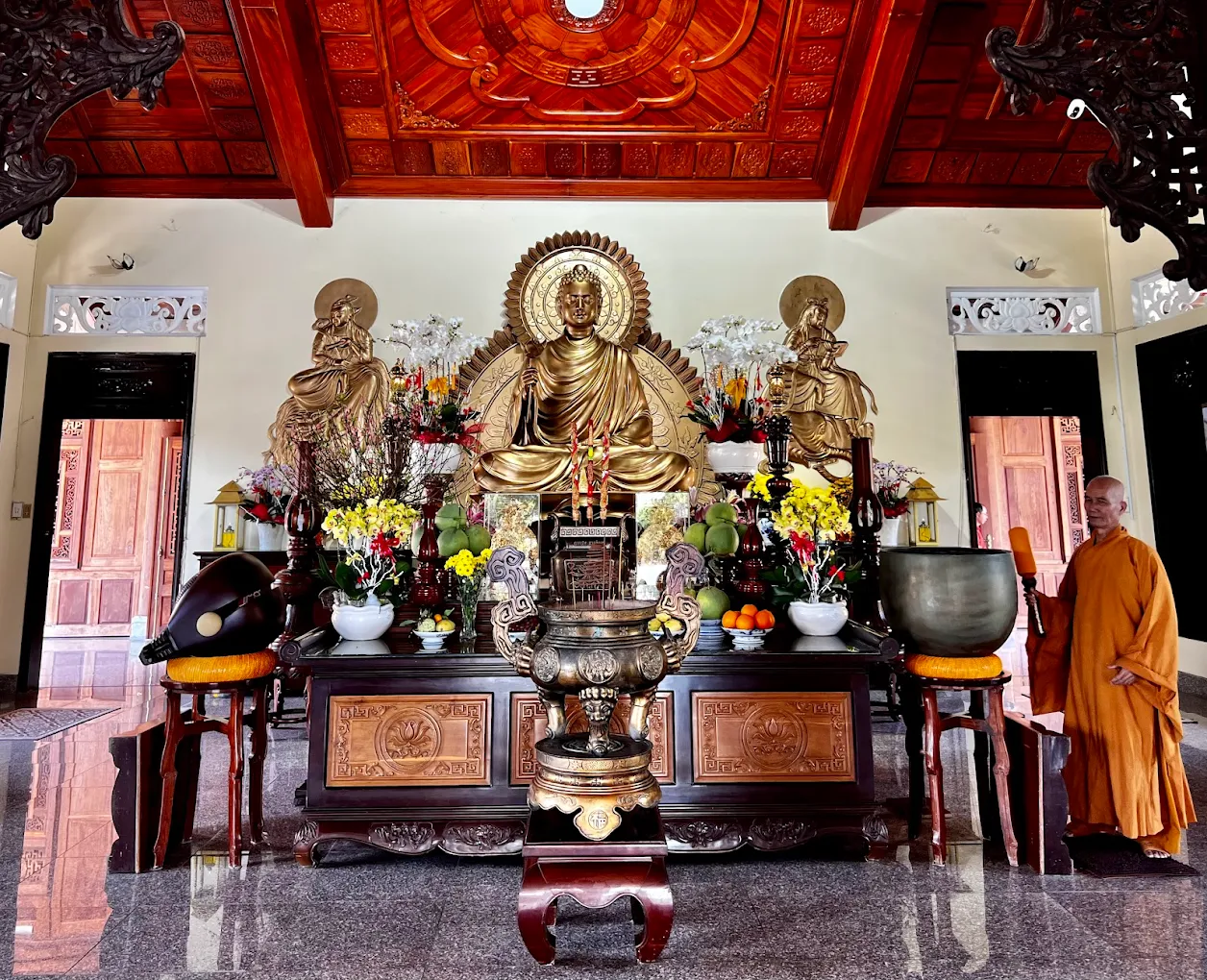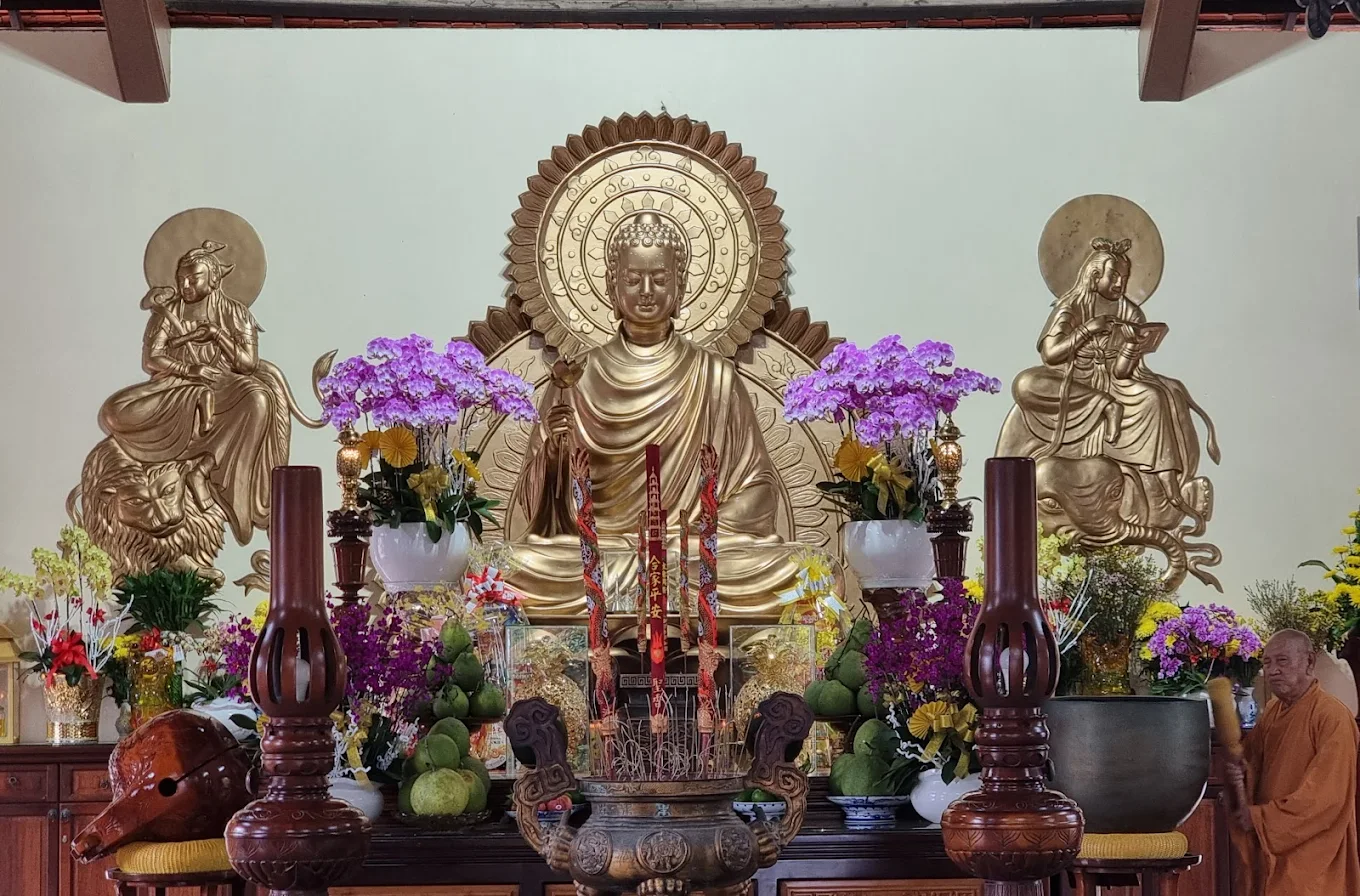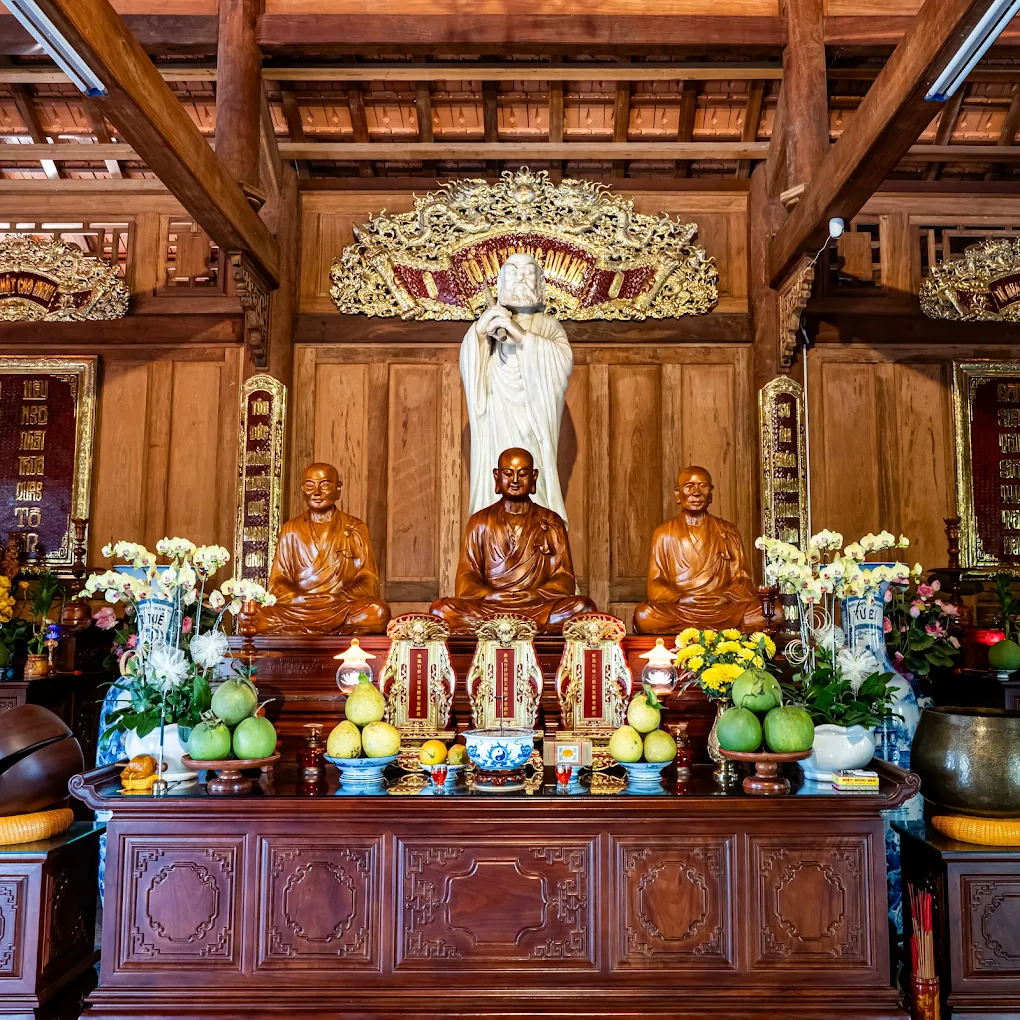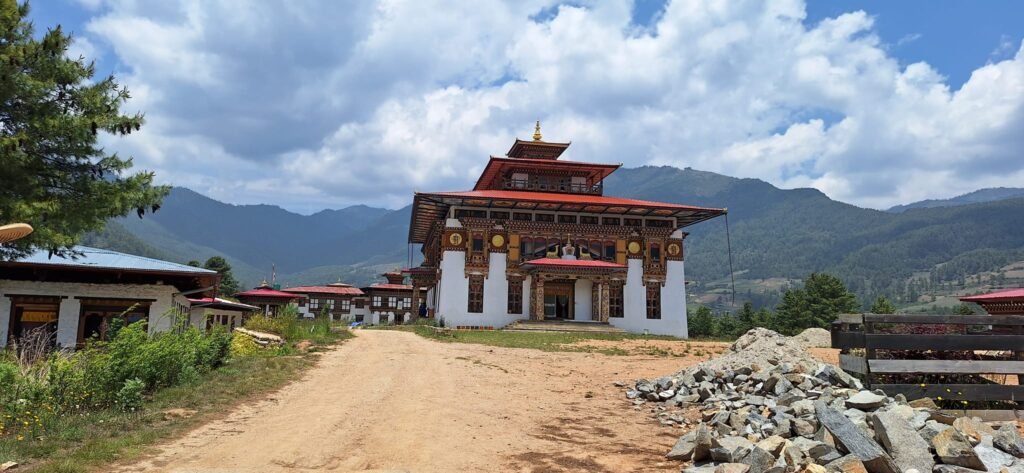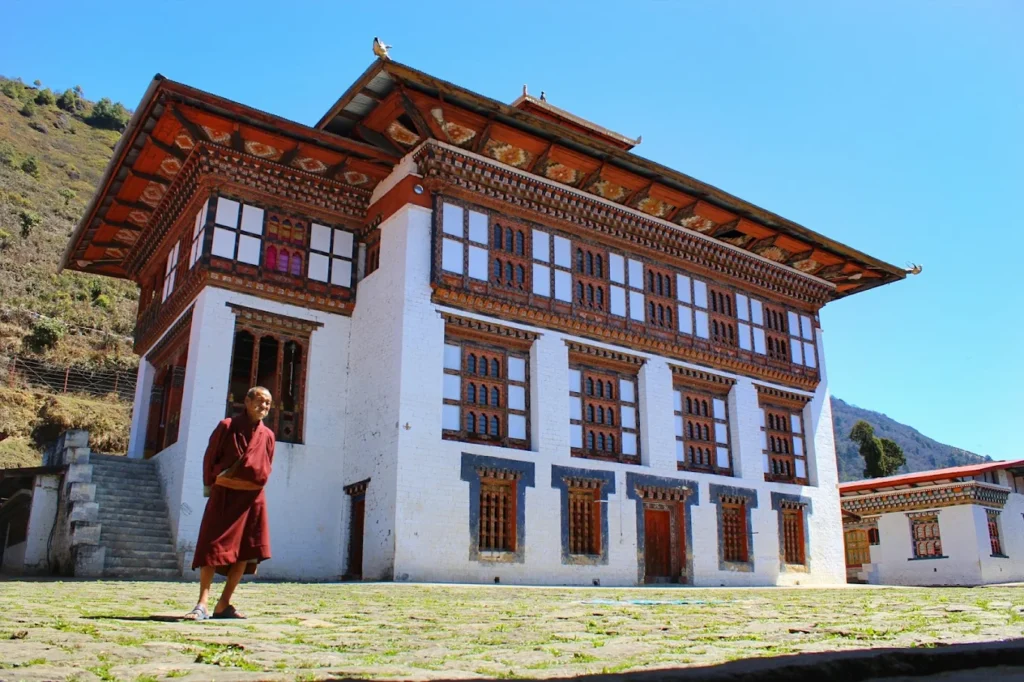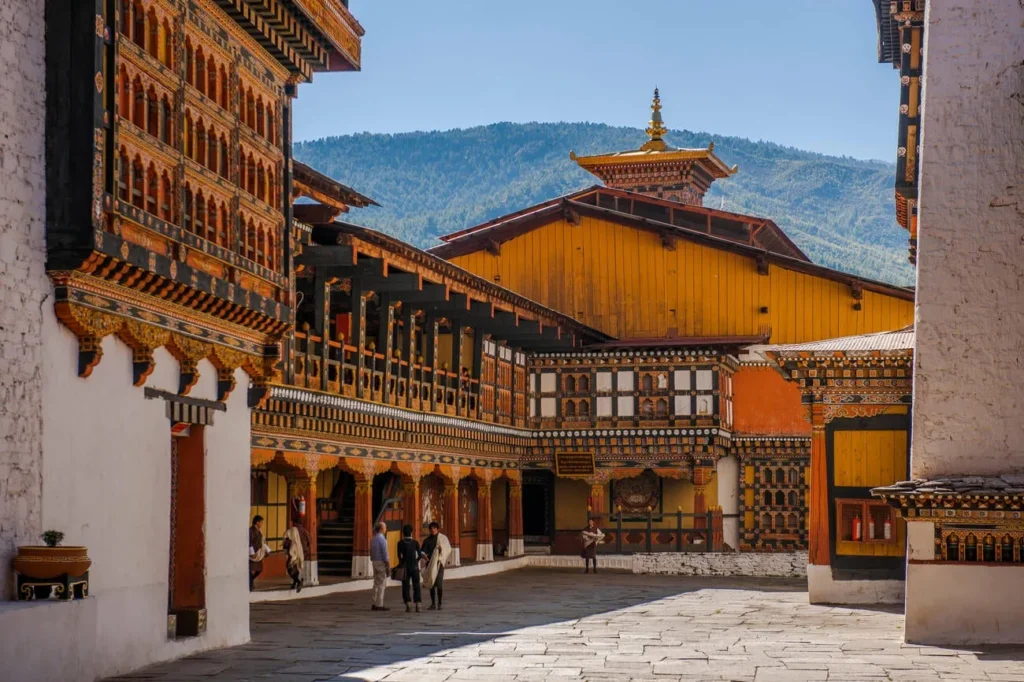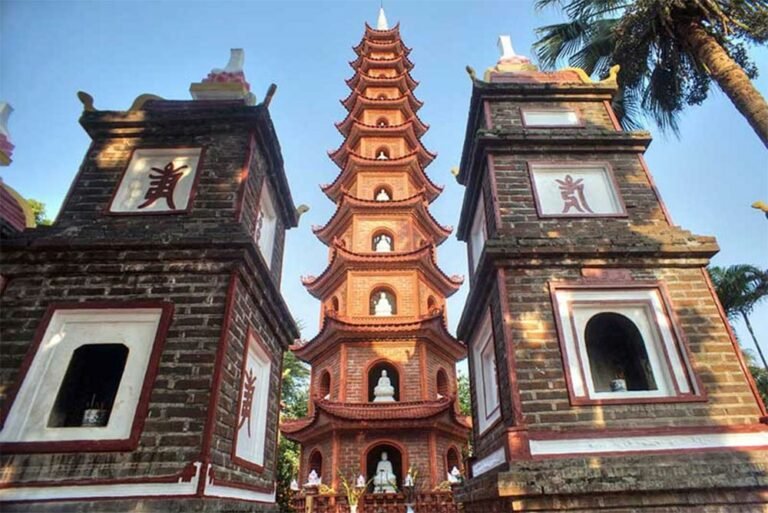Chơn Không Zen Monastery: The Golden Serenity of Vũng Tàu’s Zen Sanctuary
As dawn breaks over Vũng Tàu’s Núi Lớn, a bronze bell’s gentle toll weaves through the pine-scented air of Chơn Không Zen Monastery. In the main hall (chánh điện), monks and nuns (Tăng Ni) chant sutras before a towering gold-plated statue of Shakyamuni Buddha, its radiant calm anchoring the stillness of Zen. Founded in 1966 by Venerable Thích Thanh Từ, this sanctuary of the Trúc Lâm Yên Tử Zen tradition embodies “Chơn Không”—true emptiness, the release from worldly bonds. Perched 80 meters above sea level, its stone paths wind through ancient trees, framing Vũng Tàu’s glittering coastline. Each step up the steep ascent feels like a pilgrimage toward awakening, guided by the Buddha’s serene gaze. This sacred haven invites travelers, cultural explorers, and spiritual seekers to discover Vietnam’s Zen soul, a living testament to mindfulness.
Whispers of Enlightenment: Overview and Significance
Introduction to Chơn Không Zen Monastery
Chơn Không Zen Monastery, nestled on Núi Lớn in Vũng Tàu, stands as a beacon of Trúc Lâm Yên Tử Zen Buddhism, dedicated to reviving Vietnam’s ancient meditation practices. Its monumental gold-plated Shakyamuni Buddha statue, unveiled in 2021, crowns a serene complex that blends minimalist design with sweeping coastal vistas. The name “Chơn Không” reflects the Zen quest to transcend attachments, a vision brought to life by founder Venerable Thích Thanh Từ. A spiritual cornerstone, the monastery nurtures mindfulness, weaving Vietnam’s Buddhist heritage into every chant and silent step.
Historical Journey
- Origins (1966): Venerable Thích Thanh Từ established a small hermitage on Núi Lớn, a quiet retreat for solitary meditation.
- Expansion (1969–1970): The site grew into a monastery, offering meditation training for monks and nuns, welcoming a growing community.
- Reconstruction (1995): Rebuilt as Chơn Không Zen Monastery, it emerged as a grand complex with separate areas for monks (Tăng) and nuns (Ni).
- Milestone (2021): The unveiling of the gold-plated Shakyamuni statue marked it as a major pilgrimage destination.
Cultural Significance
- Trúc Lâm Zen Legacy: The monastery carries forward the 13th-century Trúc Lâm Yên Tử tradition, founded by King Trần Nhân Tông, blending meditation with daily life.
- Ethnic Vietnamese Identity: A spiritual home for ethnic Vietnamese (Kinh) Buddhists, it preserves Zen practices like silent meditation (thiền).
- Regional Influence: Its meditation retreats draw devotees from Ho Chi Minh City and beyond, fostering inner growth.
- Global Appeal: International Zen practitioners visit, seeking authentic Vietnamese Buddhism in a serene setting.
Unique Legacy
- Shakyamuni’s Radiance: The gold-plated statue, a rare marvel, symbolizes enlightenment, inspiring all who meditate before it.
- Thích Thanh Từ’s Teachings: His vision of accessible Zen for laypeople shapes the monastery’s open, inclusive ethos.
- Coastal Harmony: Its Núi Lớn perch, with sea views, mirrors Zen’s unity with nature, enhancing meditation.
- Living Tradition: Daily meditation sessions, unbroken since 1969, keep the monastery’s spiritual heart beating.
Community and Global Impact
- Local Bonds: The monastery hosts retreats and Buddhist festivals, deepening ethnic Vietnamese Buddhist connections.
- Monastic Life: Over 100 monks and nuns train here, spreading Trúc Lâm teachings across Vietnam.
- Tourism Magnet: Thousands visit yearly, drawn by the statue and Zen retreats, enriching Vũng Tàu’s cultural tapestry.
- Cultural Exchange: Shared meditation sessions unite local Buddhists and global visitors in mindfulness.
Serenity in Stone: Architectural and Spiritual Features
Iconic Design
Chơn Không Zen Monastery’s minimalist aesthetic captures Vietnamese Zen’s essence, with clean lines and earthy tones blending into Núi Lớn’s landscape. Its layout centers on the main hall, embodying Trúc Lâm’s call for simplicity. Tiled roofs with gentle curves and stone courtyards evoke tranquility, while the monastery’s 80-meter elevation offers sweeping views of Vũng Tàu’s coastline, amplifying its meditative calm.
Key Structures
- Main Hall (Chánh Điện): The spiritual core, housing the Shakyamuni statue, glows with wooden beams and lotus carvings.
- Meditation Halls: Separate spaces for monks and nuns, designed for silent thiền practice, hum with quiet focus.
- Bell Tower: A stone structure with a bronze bell, rung to signal meditation, adds a timeless rhythm.
- Garden Paths: Winding trails with stone benches invite mindful walking amid ancient pines.
Worshipped Statues
- Shakyamuni Buddha: The 10-meter gold-plated statue, crafted in 2021, depicts the Buddha in meditation, his serene smile resting on a lotus pedestal. Its gold leaf, shimmering under sunlight, symbolizes purity and awakening.
- Secondary Figures: Sandalwood statues of Avalokitesvara (Quan Thế Âm) and Maitreya Buddha flank the main altar, their gentle forms inspiring compassion and hope.
- Spiritual Role: Devotees meditate before Shakyamuni, seeking enlightenment through Trúc Lâm Zen’s focus on inner stillness.
Materials and Techniques
- Construction: Local stone and teak, joined with traditional Vietnamese techniques, form the monastery’s sturdy frame.
- Artistry: Lotus carvings and ceramic tiles, crafted by ethnic Vietnamese artisans, reflect Zen’s understated beauty.
- Cultural Essence: Trúc Lâm-inspired designs, distinct from ornate Chinese or Theravada styles, prioritize meditation’s simplicity.
Signature Elements
- Shakyamuni Statue: The gold-plated centerpiece, visible from afar, anchors the monastery’s spiritual mission, drawing pilgrims.
- Serenity Garden: A landscaped haven of pines and stone lanterns, perfect for quiet reflection.
- Coastal Overlook: A terrace with sea views, symbolizing Zen’s harmony with the natural world.
Lesser-Known Features
- Stone Inscriptions: Plaques near the main hall honor 1966 founders, etched in elegant Vietnamese script.
- Hidden Shrine: A small alcove for Patriarch Trần Nhân Tông, used for Trúc Lâm rituals, often unnoticed by visitors.
- Vintage Bell: A 1970s bronze bell, rung sparingly, carries a soft, historical resonance.
Preservation and Evolution
- Restoration (2015): Roof repairs preserved ceramic tiles, maintaining the monastery’s elegance.
- Challenges: Coastal winds erode stonework, countered with annual care to protect the structures.
- Modern Touches: Solar lighting, added in 2023, illuminates evening meditation sessions.
Steps to Emptiness: Rituals and Practices
Daily Sacred Rites
- Morning Chanting: Monks and nuns recite the Heart Sutra at dawn, cultivating mindfulness with each resonant word.
- Meditation Sessions: Silent thiền practice, held three times daily, centers on breath and inner calm.
- Incense Offerings: Devotees light sandalwood incense before Shakyamuni’s statue, a gesture of reverence.
Unique Practices
- Mindful Walking: Monks lead slow walks through the garden, grounding practitioners in the present moment.
- Lay Retreats: Weekend sessions teach meditation to laypeople, embodying Thích Thanh Từ’s inclusive vision.
- Signature Ritual: Meditation before the Shakyamuni statue, a practice tied to the monastery’s Zen focus, deepens spiritual clarity.
Festival Traditions
- Buddha’s Birthday (8th day, 4th lunar month): Lantern processions and statue bathing ceremonies draw hundreds in vibrant celebration.
- Ullambana Festival: Ancestors are honored with offerings and chants, fostering gratitude.
- Statue Veneration: Shakyamuni’s statue, adorned with lotus flowers during festivals, radiates purity.
Visitor Engagement
- Accessible Practices: Visitors can join morning chants or meditation, guided by monks in serene sessions.
- Offerings: Incense and flowers, available at the entrance, invite participation in Shakyamuni worship.
- Zen Etiquette: Bow three times before the statue, a Trúc Lâm custom signaling respect.
Spiritual Community Roles
- Monastics: Over 100 monks and nuns lead rituals and teach meditation, guiding the community.
- Lay Devotees: Ethnic Vietnamese volunteers organize festivals, keeping traditions alive.
- Statue Care: Daily cleaning of Shakyamuni’s statue reflects the community’s devotion.
Ascending to Peace: Visitor Information
Navigating to Chơn Không Zen Monastery
- Location: On Núi Lớn, a 15-minute drive from Vũng Tàu’s city center, reached via steep, winding roads.
- Landmarks: Near Núi Lớn Cable Car Station, marked by clear Vietnamese and English signs.
- Routes: Taxis or motorbikes from Bãi Sau Beach are ideal, with limited parking nearby.
Address of Chơn Không Zen Monastery
- Vietnamese: Thiền Viện Chơn Không, Đường Núi Lớn, Phường 2, Thành phố Vũng Tàu, Tỉnh Bà Rịa-Vũng Tàu.
- English: Chơn Không Zen Monastery, Núi Lớn Road, Ward 2, Vũng Tàu City, Bà Rịa-Vũng Tàu Province.
Visiting Hours and Etiquette
- Hours: Open daily, 6:00 AM–5:00 PM, with meditation sessions at fixed times.
- Etiquette: Remove shoes before entering the main hall, speak softly, and dress modestly, avoiding shorts or sleeveless tops.
- Zen Custom: Offer incense with both hands and bow to Shakyamuni, a gesture of reverence.
Accessibility and Safety
- Mobility: Steep stairs to the main hall may challenge those with mobility issues, with no ramps available.
- Safety: Well-kept paths and monastic presence ensure a secure visit.
- Tips: Wear comfortable shoes for the climb and bring water for the ascent.
Amenities and Surroundings
- Facilities: Restrooms and a small shop offer incense and Buddhist texts for visitors.
- Nearby: Núi Lớn Cable Car and Bãi Sau Beach, within 4 km, provide scenic and leisure options.
- Dining: Vegetarian stalls along Trần Phú Street, 3 km away, serve affordable, mindful meals.
Immersive Visitor Tips
- Best Timing: Arrive at dawn for tranquil chants and sparse crowds, ideal for reflection.
- Sensory Moments: Breathe in pine-scented air and listen to the bronze bell, evoking Zen calm.
- Statue Connection: Offer incense to Shakyamuni and sit briefly in meditation, deepening the spiritual experience.
- Retreat Planning: Join a weekend meditation session to immerse in Trúc Lâm Zen practice.
